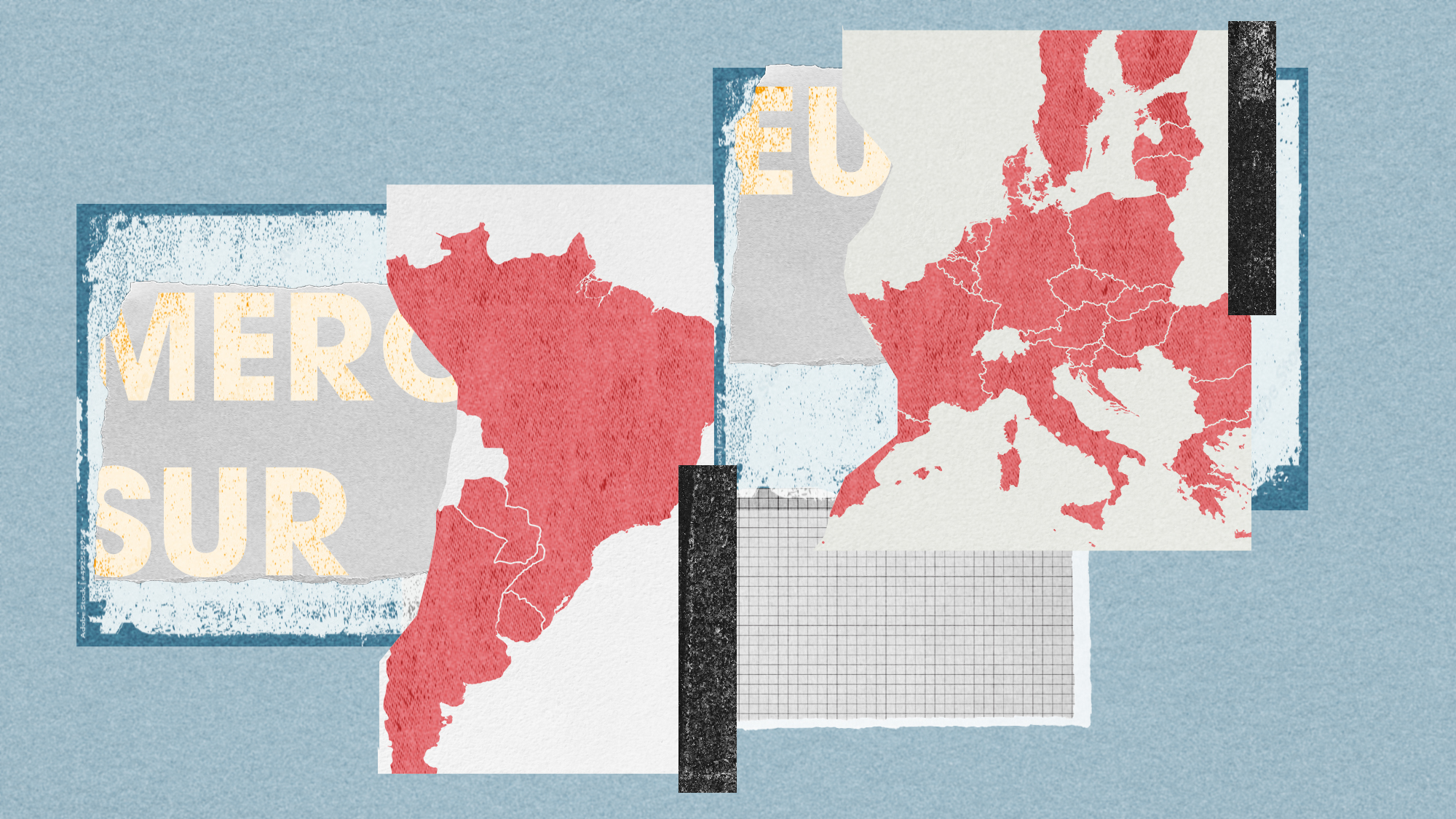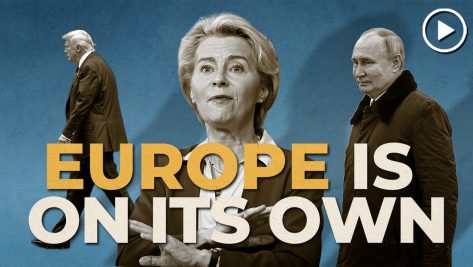In December 2024, the President of the European Commission Ursula von der Leyen and her counterparts from four Mercosur countries (Brazilian President Lula, Argentinian President Milei, Paraguayan President Peña, and Uruguayan President Lacalle Pou) announced the finalization of negotiations of a brand new and comprehensive EU-Mercosur partnership agreement. Whether the deal becomes a reality, however, depends on a complex web of legal and institutional arrangements.
For nearly twenty years, the EU has been negotiating a new generation of free trade agreements (FTAs) with third countries. According to the European Commission – the main institutional EU negotiator – these agreements are comprehensive and go beyond tariff cuts and trade in goods, covering services, public procurement, and investment protection. They also link trade with sustainable development, health, environment, culture, and social rights.
Because they are so wide-ranging, these agreements reflect how closely trade is interlinked with other policy areas. Unlike classical FTAs, they must navigate the sui generis EU internal structure and external commitments. When the EU negotiates an international agreement, the critical issue of how power is shared between the EU and its member states becomes central.
Furthermore, the path from negotiation to implementation is particularly complex when the EU is involved. While the EU can enter international agreements on its own, as an entity, it’s also a composite of 27 sovereign states – each with their own powers and prerogatives. This creates a unique challenge in international treaty law, one that is a genuine legal conundrum: How to balance the EU’s ability to act as a unified body with the legal rights of its member states.
Legal questions are never very far from political interests.
The EU-Mercosur negotiations date back to 1999, when both sides sought to deepen economic and political ties through a comprehensive trade and partnership agreement. The negotiations were based on the Council’s negotiating guidelines that sought to conclude an association agreement with Mercosur to modernize the 1995 bloc-to-bloc Interregional Framework Cooperation Agreement (IFCA), which has been in force since 1999. But the path has not been smooth. Key sticking points over the years have included concerns about Amazon deforestation, agricultural market imbalances, and differing regulatory standards.
For the EU, the stakes are high. The deal represents a strategic opportunity to strengthen its presence in Latin America, countering China’s growing influence, as well as secure access to critical raw materials. The agreement’s structure was based on three pillars: trade, political dialogue, and cooperation. While the Commission published the chapters of the trade pillar in 2019, the full text of the agreement only recently became available. Now, the deal is ready, and the important question emerges: What’s next?
What is a “mixed agreement”?
The EU has historically held exclusive power over trade through its Common Commercial Policy (CCP), allowing it to conclude international trade agreements without involving its 27 member states. But today’s FTAs cover a variety of other areas where the EU either shares authority with its member states or they retain their own powers.
When negotiating a free trade agreement, the EU must follow the legal basis in its founding treaties (TEU and TFEU today). If a deal extends beyond the EU’s exclusive trade authority – as many modern trade agreements do – member states could be required to enter this international agreement alongside the EU. This is a very complex scenario because the EU and its many member states must come to an international agreement together, and this creates what is known as a mixed agreement.
Although the term “mixed agreements” does not appear in the TEU and TFEU treaties, it has become a widespread practice in EU external relations. These agreements require both the EU and its Member States to sign on one part, with one or more non-EU countries on the other. This dual participation is a very fascinating and complex interplay between the EU and international law.
The EU’s approach to trade agreements evolved significantly with the Lisbon Treaty, which expanded the CCP and redefined the balance of competences between the EU and its member states. The Court of Justice of the European Union (CJEU) has played a crucial role in clarifying the extent of the EU’s exclusive powers over trade, notably through Opinion 2/15 on the EU-Singapore agreement, which set a precedent for future trade negotiations. The Court established that while the EU has exclusive competence over trade in goods, services, and direct foreign investment, other provisions – such as investment protection and portfolio investments – require national ratifications. This opinion has profound implications for how the EU-Mercosur agreement is classified and ultimately ratified.
The EU-Mercosur partnership: an EU-only or a mixed agreement?
The fate of the EU-Mercosur agreement hinges on the scope of the competences involved. The European Commission wants to structure it as an EU-only trade agreement, arguing that its primary focus is tariff reduction and trade facilitation. But recent precedents complicate this approach. The Court’s Opinion 2/15 and the legal challenges to the Comprehensive Economic and Trade Agreement (CETA) between the EU and Canada suggest that provisions on investment protection, labor rights, and environmental standards could push the agreement into the realm of shared competences – or even exclusive Member States’ competences: that signifies mandatory ratification by all member states.
Following the December 2024 political agreement, the text faces many hurdles. It must now undergo legal revision and translation into all EU official languages. The Commission will then submit proposals to the Council to sign and conclude the whole agreement, with a mid-2025 deadline. These proposals will determine whether the EU-Mercosur agreement requires ratification as a mixed or EU-only agreement. Another possibility is dividing the agreement into two – one EU-only and one mixed.
Mixed agreements face a more complex path to approval than EU-only deals. They not only require Council ratification and European Parliament consent, but approval from each Member State in accordance with their own constitutional requirements. The Council’s decisions to sign (under Article 218(5) TFEU) and – after the European Parliament has given its consent – conclude (under Article 218(6)) the agreement need a qualified majority, with Article 218(8) providing a number of exceptions for when unanimity is required, including association agreements.
What if one of the EU’s member states opposes the agreement?
The debate over the agreement’s legal form comes with profound political implications. France has emerged as the leading opponent, arguing that the deal must be treated as a mixed agreement due to its impact on agriculture, environmental standards, and public procurement. President Emmanuel Macron has insisted that the deal, in its current form, is “unacceptable” and has signaled France’s intention to challenge the Commission’s approach both legally and politically.
The path to ratification differs dramatically based on how the agreement is categorized. An EU-only treaty would need only a qualified majority vote in the Council of the EU and European Parliament approval – significantly expediting the process. A mixed agreement, however, requires unanimous Council approval and ratification by all 27 national parliaments – a process notorious for delays. For example, the EU-Canada trade deal (CETA) was classified as a mixed agreement and stalled when Belgium couldn’t support it due to opposition from a single region in the country, Wallonia. Today, CETA remains only provisionally applied, and its full ratification is incomplete.
France’s case for approaching the EU-Mercosur agreement as mixed is bolstered by the fact that the agreement was initially negotiated as an association agreement, a broader framework typically classified as mixed. The inclusion of provisions on access to public procurement markets, environmental obligations, and agricultural standards lends credibility to France’s claim that it cannot be ratified without full national involvement. This situation echoes that of the Belgian-CETA crisis scenario.
Beyond these legal arguments, France is building political opposition by actively working to assemble a blocking minority within the EU Council. Austria and Poland have already voiced opposition to the deal, while Italy remains undecided due to internal divisions between business interests and agricultural concerns. By lobbying these states, France hopes to prevent the agreement from being passed as an EU-only treaty.
What future for the EU-Mercosur agreement?
Three precedents could shape the path forward:
- The EU-Canada (CETA) Model: Initially presented as EU-only, CETA faced strong opposition from member states in the Council. Its reclassification as a mixed agreement resulted in a prolonged ratification process that continues today, years after its provisional application.
- The EU-Singapore Model: Following the CJEU’s 2017 ruling, the EU split this agreement into two parts: an EU-only trade agreement and a mixed investment protection agreement. This division enabled the trade provisions to advance while subjecting investment terms to national approval. The EU-Mercosur agreement could follow this approach, with trade provisions moving forward under qualified majority voting while other chapters undergo national scrutiny.
- The EU-Chile Model: Here, the Commission proposed an Interim Trade Agreement (ITA) as EU-only, allowing trade aspects to be provisionally applied while awaiting full ratification of the broader framework. This “phased approach” could offer the EU-Mercosur deal immediate implementation of trade benefits while addressing national concerns over the broader agreement.
The EU-Mercosur agreement is at a critical juncture. While the European Commission pushes to finalize it as an EU-only trade agreement, France and its allies demand a mixed agreement requiring national ratifications. The outcome will shape the future of EU trade policy and determine whether the bloc can successfully negotiate major international agreements without being stymied by internal divisions. After all, legal questions are never very far from political interests. The EU-Mercosur deal and the partnership between the two regions is very close to becoming a reality, but its final form depends on European unity: whether the EU speaks with one voice or twenty-seven voices.
© IE Insights.











